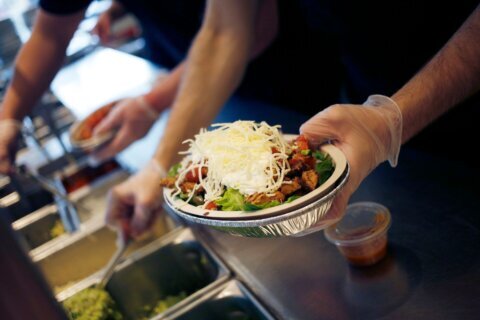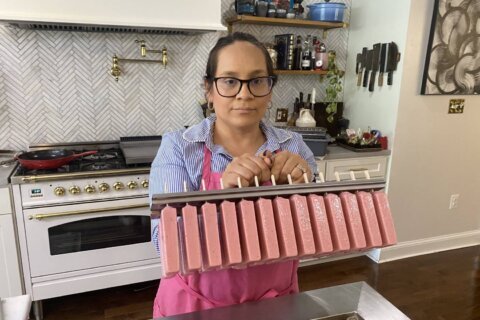The summer is upon us, and grills and smokers all over the DMV are heating up as well. For the series Fired Up with Jake and John, WTOP’s Mike Jakaitis and John Domen talk with some of the region’s best pitmasters about their methods, with the goal of helping you level up your barbecue game.
One of America’s favorite barbecue dishes is also one of the easiest to cook up, and almost impossible for a beginner to botch.
Pulled pork comes from the pork shoulder (or pork butt; they both come from the shoulder area of the pig), and every pitmaster out there agrees it’s the most forgiving for the new backyard chef to try out, as well as for the veteran pit master to show off their chops.
“You can overcook it and it will stay moist and tender,” said Stephen Raichlen, the host of “Project Smoke” on PBS and the author of several cookbooks, including “How To Grill Vegetables.”
“You can burn the outside and it will stay moist and tender; you can cook it low and slow at 250, [and] if your fire spikes up at some point and you’re at 350 to 400 degrees, you can’t hurt it,” he said.
Like most forms of barbecue, there are lots of ways to get it right. It’s really a matter of personal preference.
For instance, Myron Mixon, world champion pitmaster and the owner of Myron Mixon’s BBQ in Old Town Alexandria, injects his pork shoulder with a mixture of apple juice, salt and sugar before throwing it in the smoker. Rob Sonderman at the Federalist Pig and Fernando Gonzales at 2Fifty BBQ don’t inject the meat.
“We’ll smoke our pork shoulder for five to six hours, and then we wrap it in foil to try to keep some of that moisture inside so we don’t have to do an injection,” said Sonderman, whose pulled pork is some of the boldest you’ll find in the D.C. area.
Gonzales uses paprika in the spice mix he rubs the pork with before cooking, along with salt, pepper, garlic powder and onion powder; Mixon and Sonderman only use a bit of paprika to color the meat, so they know where they’ve applied the rub and where they haven’t. On the other hand, Gonzales doesn’t use sugar, which Mixon and many backyard chefs do in order to balance out the spice and add a nice bark on the outside.
You’ll have to try all these methods out yourself to figure out what you like best.
Mixon smokes his pork shoulder at around 300 degrees for a couple hours, wraps it in butcher paper, and puts it back in for another two to three hours, until the internal temperature hits 205 degrees. Pulling it out at the right temperature can make a tremendous difference in how easily the meat pulls apart — even 190 degrees is too low, he said.
Sonderman advises to wait as long as possible before pulling the pork apart. “When they’re cooked, we leave them whole until we’re, like, basically ready to start serving them. Pulling the meat too early — especially if you’re keeping it hot on a steam table or maybe keeping it hot in the oven — it’s going to be a much better product if you leave it whole as long as you can.”
He likes to add a vinegar-based sauce, separate from barbecue sauce, into the pork to help moisten it up a little more too.
“Fat loves acid; heat loves acid,” Sonderman said.








